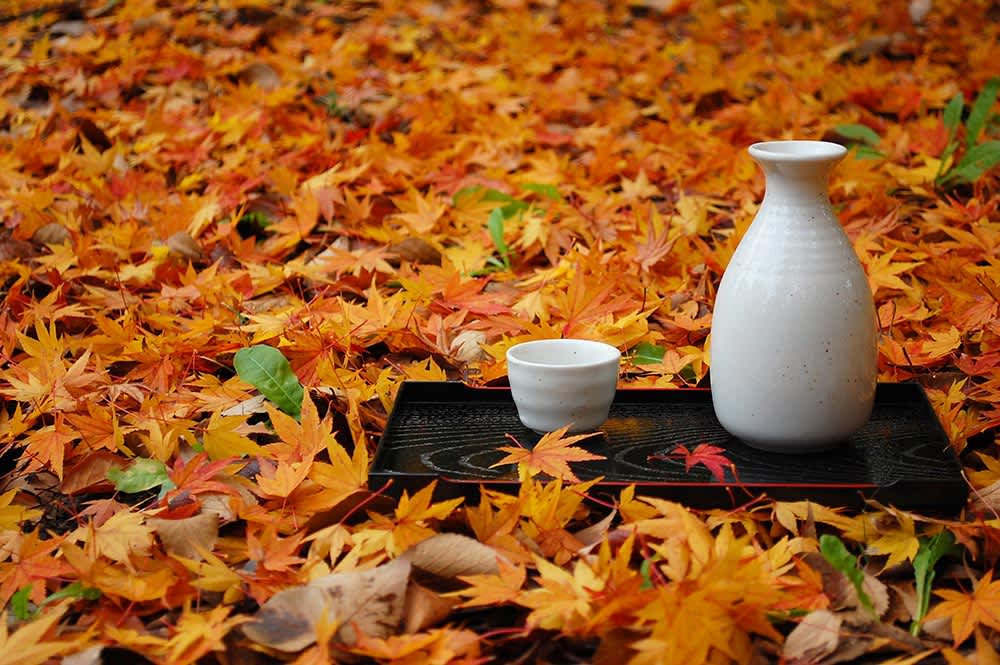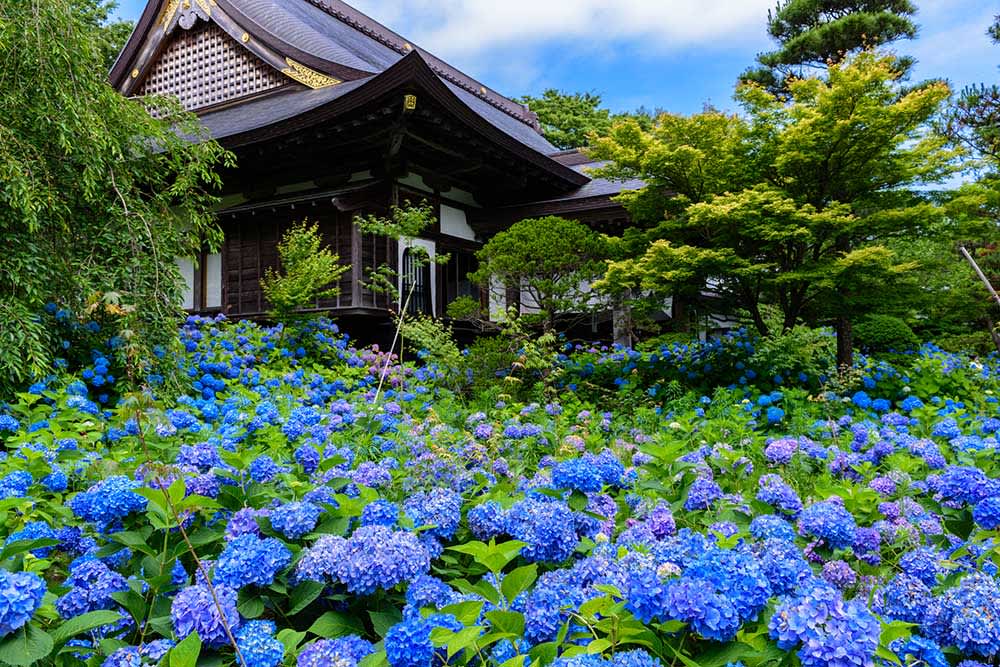Have a little flexibility with your vacation time? Japanese traditions are closely tied to the changing seasons, so there is an abundance of unique experiences to enjoy no matter which month you plan to visit. Traveling in the off-season not only provides a welcome reprieve from tourist crowds, but also the chance to experience spectacular seasonal scenery and unique cultural and culinary delights that come only once a year.
Tastes of Autumn
Autumn in Japan is awash with color as leaves change, creating stunning backdrops for temples and shrines. It is also the harvest season, and perhaps the most important harvest in Japan is rice. The Hoshitoge Terraced Rice Fields are one of Niigata’s most picturesque attractions. Carved into the lush green hills, the paddies are flooded with water during June and November, forming pools which reflect the sky. Niigata’s excellent rice production also helps to account for its preeminence in sake brewing. October 1st is Sake Day, when sake brewers begin using the newly harvested rice. It is also the day when hiyaoroshi hits the market. This seasonal sake, matured over the summer, is only available in autumn (usually from September to November) and due to its single pasteurization, retains a complex freshness.

While many festivals are held in summer, the Takayama Autumn Festival in Gifu takes place on the 9th and 10th of October. Tall, elaborately decorated floats are paraded through the narrow streets of the old town for a historic and artistic spectacle. On the 9th, 100 floats move through the streets at night, suffusing the town with lantern light.

Winter Events to Warm the Spirit
While traveling in February might conjure up images of cold grey skies, there are so many special experiences to be had that you’re sure to fall in love with the magic of Japanese winter. One of the most well-known winter events is the popular Sapporo Snow Festival, with its towering ice sculptures and beautiful illuminations. Several other snow festivals can be found throughout Japan, offering similar winter beauty with smaller crowds. Japan also boasts world-class skiing and famous powder snow, and a wealth of natural hot springs to warm up in afterwards. A perfect spot to enjoy the winter hot spring experience is Ginzan Onsen in Yamagata. Its Taisho-period (1912-26) buildings conjure a unique, old-world charm which is heightened by a dusting of snow.

The end of February begins the transition to spring, and one of the first things to bloom are plum trees. Dazaifu Tenmangu Shrine in Fukuoka is home to Japan’s most famous plum tree, Tobiume, and the grounds hold around 6,000 trees altogether, making it a wonderful place to admire the first blossoms of spring.
The Rainy Season (Tsuyu)
Japan’s rainy season starts in early June and continues through mid-July. There’s plenty to enjoy in this beautiful season as the bright green of spring slowly transitions to deep the green of summer. Rice fields fill with water, and hydrangeas flourish in the moist air. Unshoji Temple on Akita’s Oga Peninsula becomes a paradise of extravagant blue blossoms in mid-June, as 1,500 hydrangeas come into full bloom. For those days when it’s too wet to brave the weather, visiting a traditional theater is a nice way to spend the day. Kabuki theater has a history of more than 400 years, and the Kanamaruza Kabuki Theater is the oldest existing playhouse in Japan, and still uses Edo-period (1603-1867) mechanisms for stagecraft. Hokkaido sees lower rainfall than mainland Japan, and mid-June is host to several dynamic dance festivals. When temperatures begin to heat up in July, visiting higher altitude destinations is also a great option. The Chubusangaku National Park offers ample hiking opportunities in relative cool, while snow lies on the ground year-round along the Tateyama Kurobe Alpine Route.

Whether it’s sampling seasonal sake, visiting festivals, or admiring the changing scenery, Japan’s off-season has so much to enjoy. Smaller crowds and chances for cheaper travel deals ensure that it is the preferred choice for savvy travelers with flexible schedules. So, next time you plan a visit to Japan, consider the delights of the autumn, winter, and rainy seasons. Whatever time of year piques your interest, there are sure to be special events that will make for unforgettable memories.



















































